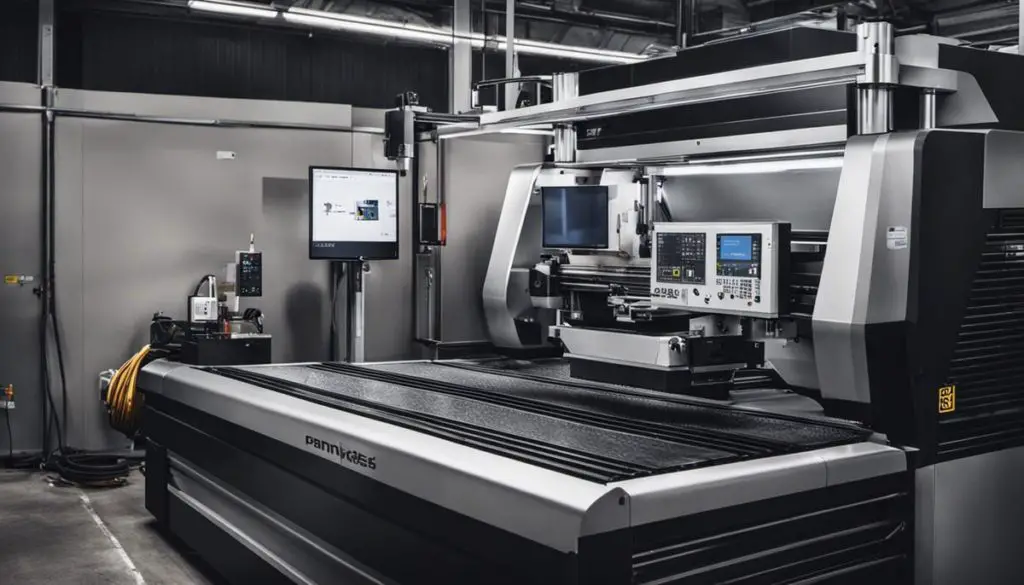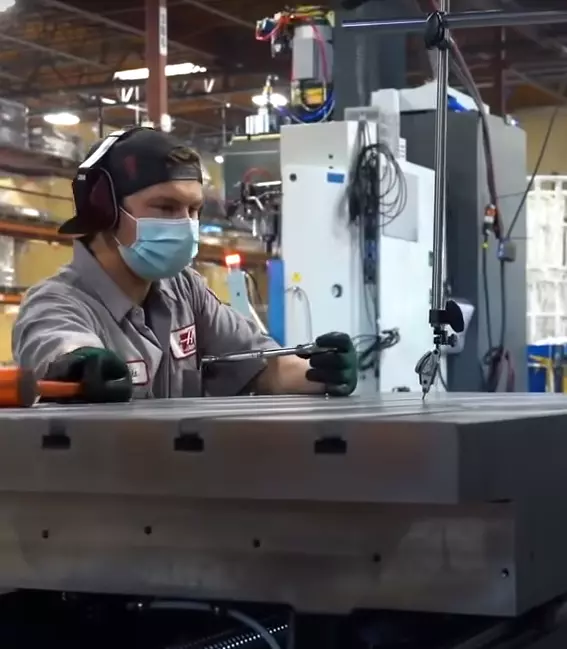
Key Takeaways are:
- Understanding CNC Machining Problems: Identifying and understanding the challenges in CNC machining, such as programming errors, tooling errors, calibration issues, maintenance, and safety concerns, are crucial steps in addressing them.
- Regular Checks and Maintenance: Regular checks, maintenance, and calibration are essential to ensure the optimal performance of CNC machines. This includes routine tool inspections, code reviews, and machine calibration checks.
- Proactive Measures: Proactive steps such as proper machine maintenance, ensuring the correct tooling, quality control measures, and comprehensive operator training can help bypass potential pitfalls in CNC machining.
- Addressing Software Configuration: Regular updates, backups of most-used configurations, and monitoring machine performance post-installation are important to prevent software-related issues.
- Workplace Safety: Emphasizing safety protocols, utilizing tech-driven training modules, and ensuring operator competency are some preventative measures to ensure workplace safety.
- Consulting Professionals: When faced with complex issues, consulting a professional can help in quickly resolving the problems.
- Temperature Control: Investing in a good cooling system and maintaining regular monitoring of the temperature near the machine can prevent inconsistencies or defects due to temperature fluctuations.
- Power Supply Management: Equipping the workshop with a dedicated power supply system for CNC machines, with backups ready in case of exigencies, can prevent power and electrical issues.
- Staying Up-to-Date: Keeping up with technological advancements in CNC machining and regulating proactive maintenance cycles can prevent unexpected machine downtimes.
CNC Machining stands as a cornerstone of modern manufacturing, providing precision, efficiency, and consistency that underpin numerous industries. However, as with any highly technical procedure, it involves a vast array of potential hiccups and complications, from tool breakages and dimensional inaccuracies to poor surface finishes and system breakdowns. Identifying and understanding these challenges are the first critical steps in addressing them. Furthermore, by learning about a range of troubleshooting techniques, such as conducting visual inspections, executing tests, or scouring through previous error logs, one can isolate and rectify these issues swiftly and efficiently. This essay also aims to illuminate the proactive steps that an operator can take to bypass these pitfalls altogether, including proper machine maintenance, ensuring the correct tooling, quality control measures, and comprehensive operator training.
| Issue | Solution |
|---|---|
| Programming Errors | Regular checks and code reviews, implementing an automated code-review tool. |
| Tooling Errors | Routine tool inspections and replacement before damage escalates to a significant issue. |
| Calibration Issues | Consistent calibration checks, use of machine calibration software to automate procedures. |
| Improper Machine Maintenance | Regular maintenance tasks like lubrication and cleaning, apart from regular wear and tear checks. |
| Workplace Safety Concerns | Emphasizing safety protocols, utilizing tech-driven training modules, ensuring operator competency. |
| Temperature Fluctuations | Invest in a good cooling system and maintain regular monitoring of the temperature near the machine. |
| Power and Electrical Issues | Ensure a stable power source, regularly inspect cable condition, CNC electrical circuits, and replace worn-out segments. |
| Software Configuration Issues | Routinely check for updates, keep a backup of your most-used configurations, and monitor machine performance post-installation. |
One of the most prevalent issues is programming errors. The efficiency and accuracy of CNC machining rely heavily on the program’s integrity. One small coding error, and the entire operation can be compromised. Inconsistency in tool paths or improper data inputs can lead to botched batches of products or even entire operational failures. The solution? Regular checks and code reviews can minimize the chances of error. Implementing an automated code-review tool could also identify flaws, reducing human involvement and consequently the likelihood of errors.
Machine tooling errors also frequently occur since CNC machines use computerized systems to control cutting tools. The slightest mishap – a damaged tool or an improper tool for a particular design – can be detrimental. Smart preventive measures involve routine tool inspections and replacement before damage escalates to a significant issue.
CNC machines rely on precision. Consequently, an incorrectly calibrated machine is one of its most critical issues. This affects the end product’s dimensions, posing factual build concerns. CNC machines require consistent calibration checks to maintain optimal performance. Luckily, the industry offers a plethora of machine calibration software to monitor machine stability, automate calibration procedures, making the process relatively straightforward and efficient.
Another substantial issue arises from improper machine maintenance, leading to breakdowns and decreased life expectancy. Critical components like motors, gears, bearings, or spindles can wear over time. Maintenance tasks like lubrication and cleaning, apart from regular wear and tear checks, can keep machines in top-notch working order.
Lastly, there is the concern of workplace safety. Accidents during operation can occur due to various reasons – lack of training, inadequate protective gear, or even inattention. Emphasizing safety protocols, utilizing tech-driven training modules, and ensuring operator competency are some preventative measures.
In conclusion, while CNC machining streamlines the manufacturing process, adopting a rational, analytics-based approach to tackle common issues can further harness the technology’s potential. As with any technological tool, a little hitch doesn’t mean it’s not worth exploring; instead, it offers an opportunity to create a better, smarter, and more efficient solution.
So, keep a vigilant eye on your CNC machine dynamics, indulge in regular maintenance, and occasionally step back to pinpoint arenas that bespoke automation can make: safer, faster, and more precise. The future of manufacturing relies heavily on our ability to recognize, address, and resolve these issues. Embrace the challenges and enjoy the tech-driven journey of CNC machining.
Troubleshooting Techniques for CNC Machining
Troubleshooting Common CNC Machining Problems: A Pragmatic Approach
In the high-stakes world of Computer Numerical Control (CNC) machining, it’s vital to quickly troubleshoot and rectify any production issues that arise. Whether you’re managing a large-scale manufacturing setup or running a specialized workshop, the ability to act swiftly in the face of a problem can make a definitive difference in your bottom line and turnover time. This article looks at some effective ways to troubleshoot common issues in CNC machining, building on the foundation of prior knowledge about programming errors, tooling issues, calibration, machine maintenance, and safety measures.

Firstly, be aware of repeated part inconsistencies or defects. A common issue while working with CNC machines is unexpectedly low-quality results. This could range from poorly-finished surfaces to dimensions that are slightly off-target. This might indicate worn-out tools, an unbalanced spindle, or improper coolant application. Experiment with new tooling, balance your spindle, or adjust your coolant delivery to remedy these issues.
Next, consider power and electrical issues. Suddenly losing power or facing electrical glitches during operation can be damaging, especially in large-scale production. Ensure that your machine is connected to a stable power source with no fluctuation. Regularly inspect cable condition, CNC electrical circuits, and replace worn-out segments whenever required.
Machine vibration is another area of concern. Unwanted vibration – either from the machine itself or from surrounding equipment – can lead to inaccurate drilling or milling. To combat this, first isolate the source of the vibration. After that, it might be as simple as tightening loose components, or it might involve installing vibration isolation pads or mounts.
One more noteworthy aspect is overlooking the role of software configuration in CNC machining. Alterations in software configuration or updates can give rise to unforeseen problems, rendering the machine incapable of performing specific tasks. Routinely check for updates, keep a backup of your most-used configurations, and monitor machine performance post-installation.
Lastly, when faced with recurring or unsolvable issues, consider consulting a professional. While some issues are within a technician’s scope, others may require a more in-depth understanding of CNC machinery. Remember, professionals have been specifically trained to identify issues and have likely faced similar troubles in the past which can be of great help in quickly resolving complex problems.
In conclusion, even though some CNC machining problems can seem daunting at first, systematic problem-solving methods often lead to easy solutions. The key is identifying the root cause, making educated alterations, and keeping a close eye on the results. With a blend of proactive maintenance, swift troubleshooting, and continual adaptation to new technology advancements, you can keep your CNC machining process running smoothly and efficiently.
Preventative Measures for CNC Machining Problems
Title: Beating the Buzz: Preventative Measures against Common CNC Machining Issues
The world of CNC machining is one filled with infinite possibilities, making it an ideal playground for tech enthusiasts. It’s no secret that CNC machines, while powerful, are prone to some common issues that can disrupt the seamless process of producing high-quality parts. While you’ve already become familiar with some of these predicaments (programming errors, calibration errors, maintenance deferrals, etc.), it’s time we delve into some lesser-addressed, yet equally critical aspects.
Consistency is key when it comes to CNC machining. Nonetheless, inconsistencies or defects may arise due to improper temperature controls. Temperature fluctuations can put different parts of the machine into expansion and contraction cycles, thus affecting the end product. Invest in a good cooling system and maintain regular monitoring of the temperature near the machine to ensure optimal conditions.
Power and electrical issues, although unwelcome, are realities in any CNC machining workshop. The supercomputers controlling these machines are notorious for their power-intensive operational requirements. Equip your shop with a dedicated power supply system for your CNC machines, with backups ready in case of exigencies. Stay ahead of the game by regular checking of wiring and circuitry for any signs of wear or damage.

On the topic of machine vibrations – a shaky situation, indeed. In extreme cases, vibrations can lead to displacement of your workpiece, or worse, machine damage. Select machines with high-torque motors, which reduce vibration. In addition, ensure strict compliance with recommended RPMs to minimize the possibility of vibrations.
The role of software configuration in CNC machining can’t be overstressed. An incorrect configuration could potentially lead to disastrous consequences. A key preventive measure is to ensure that only qualified personnel handle programming tasks, and software updates should invariably be followed by thoroughly checking all machine functions.
While self-sufficiency is an applauded trait, knowing when to call in an expert aids in preserving the life and performance of your machine. When faced with complex issues, turning to professionals for help is often the smartest route.
The application of systematic problem-solving methodology assists in quickly pinpointing faults and nipping them in the bud. Incorporating it into your operations will prove efficient in maintaining machine usability and longevity.
Last but not least, staying up-to-date with technological advancements in CNC machining and regulating proactive maintenance cycles can save your firm from countless unexpected machine downtimes. Keep an eye on tech trends, carry out maintenance checks even when there aren’t any apparent issues, and be ready to embrace newer, more improved technology.
Remember, the world of CNC machining is one that continuously evolves. Make it your mission to match pace, and you’ll be ready to tackle every hurdle that comes your way. Happy machining!
Understanding the myriad of problems that can occur during CNC Machining and acquiring the knowledge of how to diagnose and correct these issues are vital skills for any operator. With a mastery of various troubleshooting techniques, operators become adept and agile problem solvers with the capacity to mitigate process interruptions and productivity losses. In tandem with these reactive maneuvers, preventative measures like maintaining the machine properly, using correct tooling, applying quality control measures, and undergoing continuous training become the backbone of a smooth and efficient manufacturing process. Through this harmonious blend of proactive and reactive strategies, CNC Machining can thrive, bolstering productivity and precision while minimizing downtime and inefficiencies.

